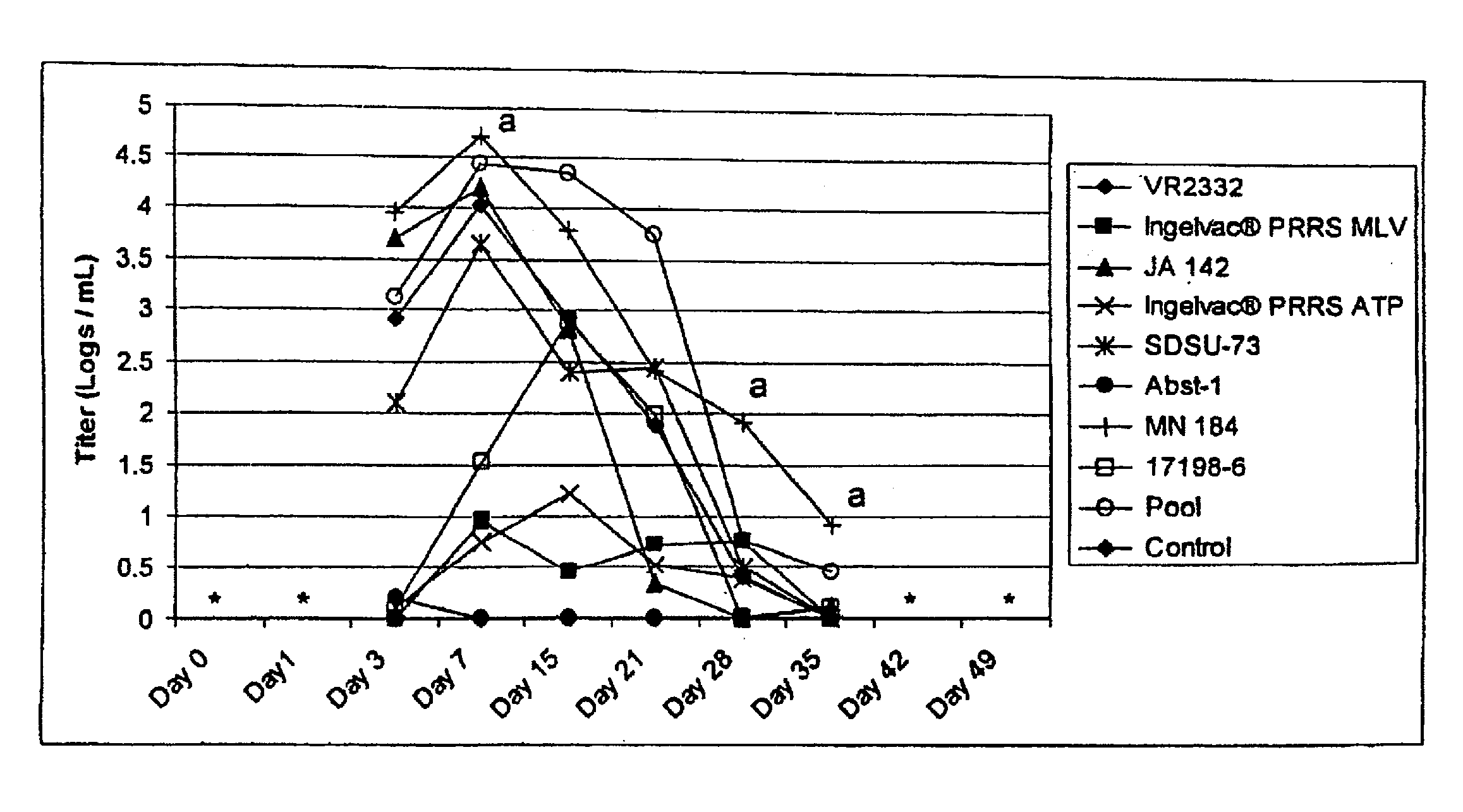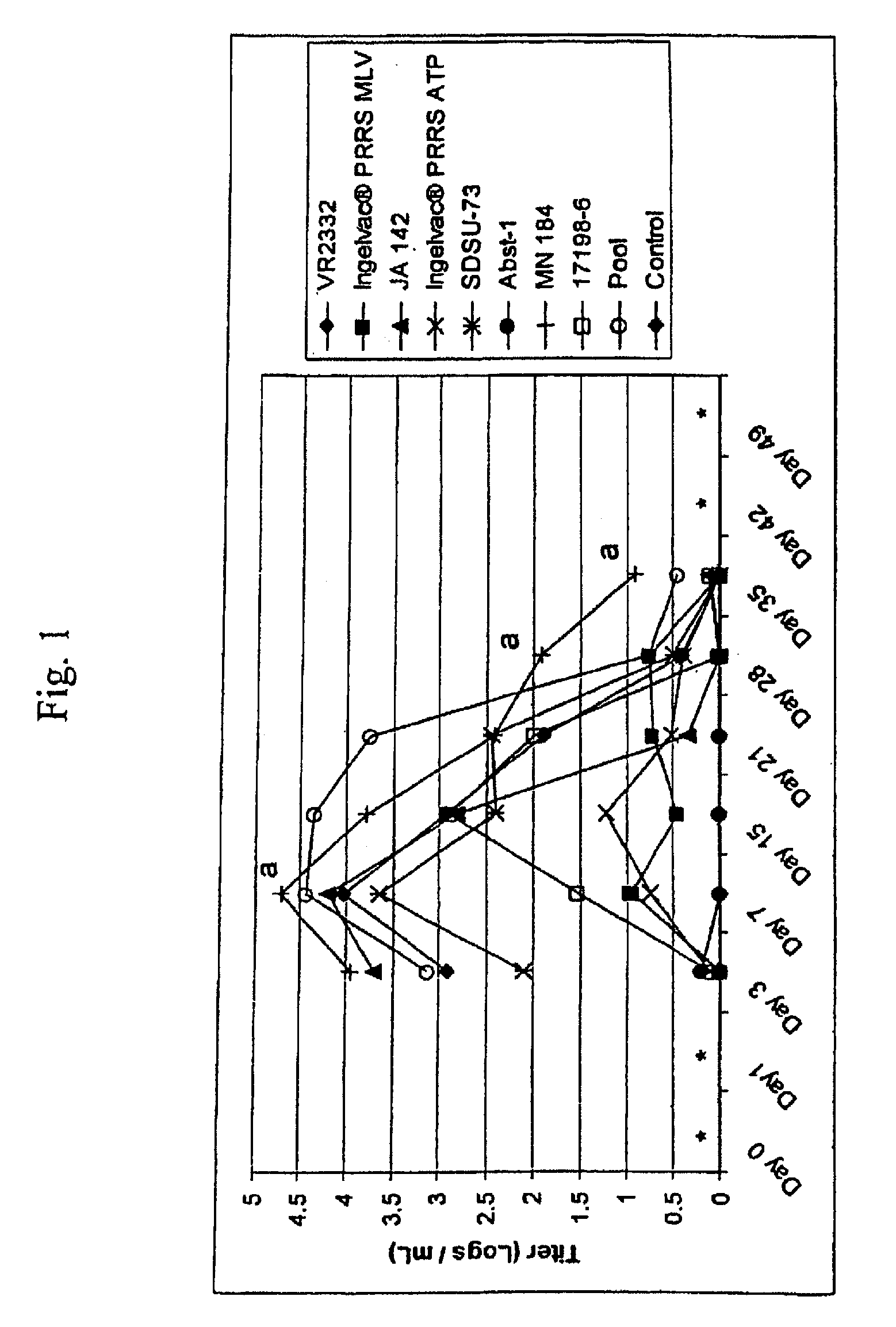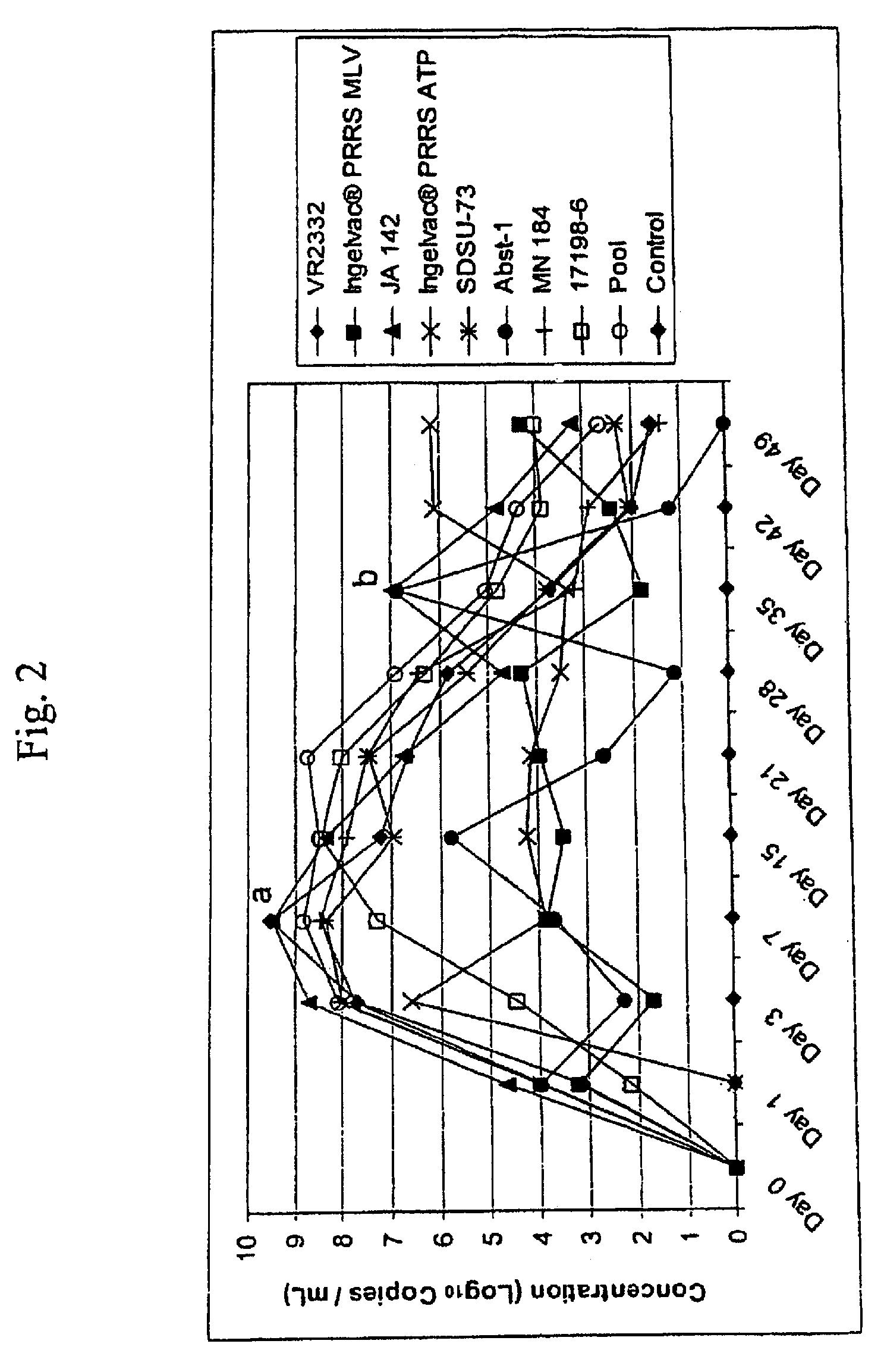Porcine reproductive and respiratory syndrome isolates and methods of use
a technology of reproductive and respiratory syndrome and isolates, which is applied in the field of new isolated wildtype prrs virus isolates, to achieve the effects of vigorous and protective immune response, higher growth rate and/or magnitude of viremia, and high virulen
- Summary
- Abstract
- Description
- Claims
- Application Information
AI Technical Summary
Benefits of technology
Problems solved by technology
Method used
Image
Examples
example 1
Materials and Methods
[0035]One hundred healthy 2-3 week-old pigs were obtained from a PRRS-free commercial herd and were maintained at Veterinary Resources, Inc., Ames, Iowa, under the supervision of a veterinarian. Animals received food and water ad libitum. All of the animal care and laboratory personnel involved with the study were blinded to the treatments given to the various groups of animals. Pigs were tested by HerdChek® PRRS ELISA 2XR (IDEXX Laboratories Inc. Westbrook, Me.) to determine if any pigs were infected with PRRSV. All of the pigs for this example tested negative. The pigs were then randomly divided by weight into 10 groups with 10 pigs per group.
[0036]A total of eight PRRSV isolates were used in this example. These isolates have been designated VR-2332, Ingelvac® PRRS MLV, JA 142, Ingelvac® PRRS ATP, SDSU 73, Abst-1, MN 184, and 17198-6. These eight isolates span the history of PRRS disease, exhibit a wide range of virulence levels, and represent relevant clinica...
example 2
[0080]This example provides several methods of attenuating PRRS isolates as well as their inclusion in immunogenic compositions.
[0081]Materials and Methods:
[0082]A vaccine preparation is formulated incorporating a modified or attenuated live virus for the immunization of swine from infection by PRRS. The PRRSV virus for the vaccine preparation is propagated in the MA-104 continuous cell line, preferably ATCC No. CL2621. The cell line is grown in flasks containing MEM, to which is added 10% fetal calf serum. The pH of the media is adjusted to approximately 7.2, and incubated at approximately 37° C. The cells are then inoculated with the virus by adding about 1 ml of a frozen inoculum to the fluid media. The virus is allowed to absorb onto the cells for 24 hours. At this time, the growth media is changed to a maintenance media consisting of MEM to which has been added 4% fetal calf serum, pH 7.6. The environment is preferably between 35°-37° C. The virus is allowed to grow until 50% o...
PUM
| Property | Measurement | Unit |
|---|---|---|
| volume | aaaaa | aaaaa |
| volume | aaaaa | aaaaa |
| volume | aaaaa | aaaaa |
Abstract
Description
Claims
Application Information
 Login to View More
Login to View More - R&D
- Intellectual Property
- Life Sciences
- Materials
- Tech Scout
- Unparalleled Data Quality
- Higher Quality Content
- 60% Fewer Hallucinations
Browse by: Latest US Patents, China's latest patents, Technical Efficacy Thesaurus, Application Domain, Technology Topic, Popular Technical Reports.
© 2025 PatSnap. All rights reserved.Legal|Privacy policy|Modern Slavery Act Transparency Statement|Sitemap|About US| Contact US: help@patsnap.com



